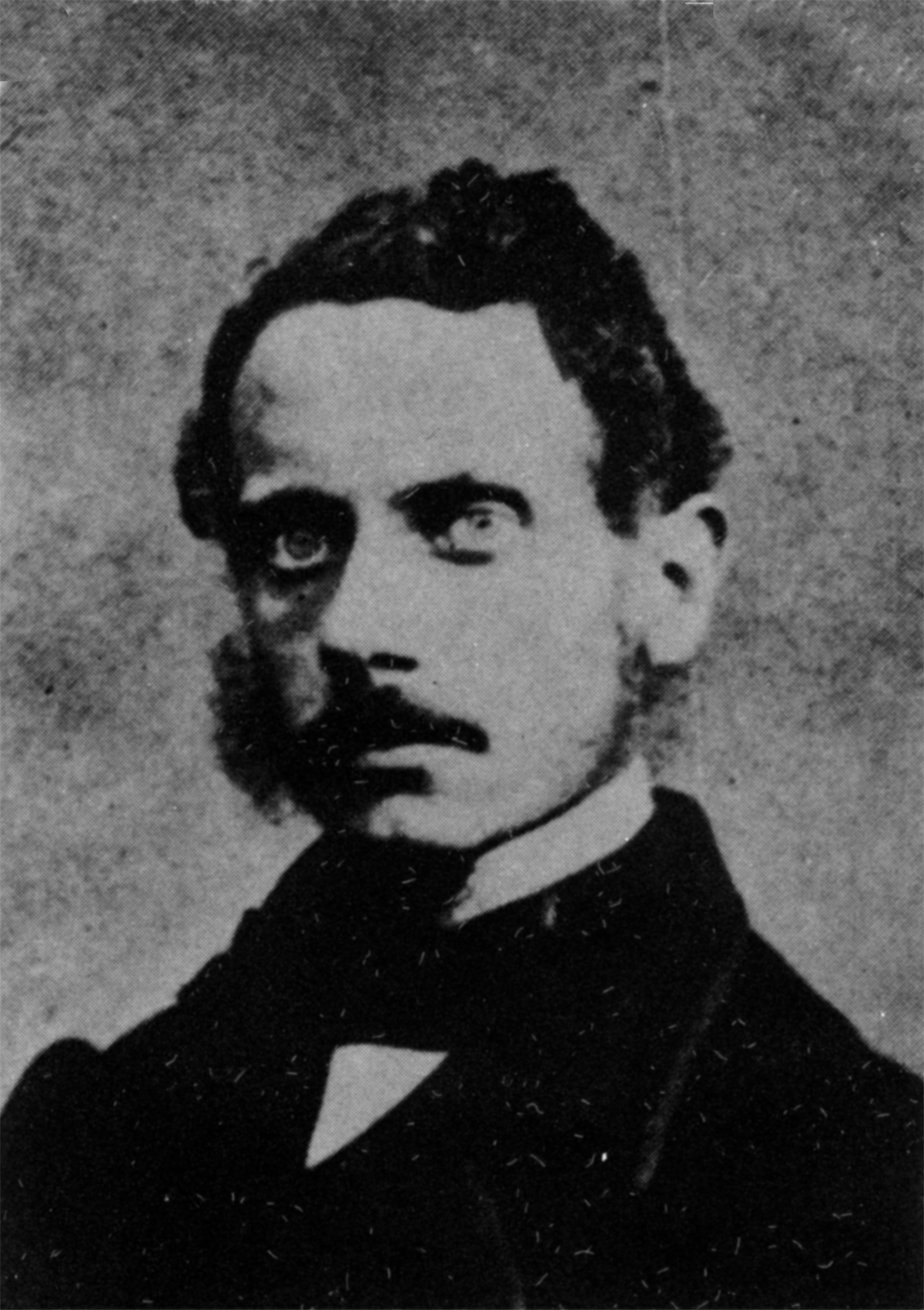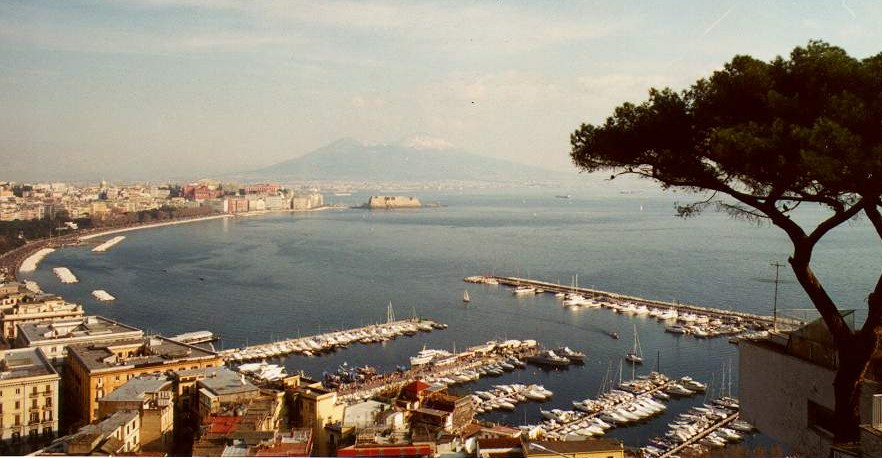|
Raffaello Bellini
Raffaello Bellini (1874-1930) was an Italian zoologist. Biography Raffaello Bellini taught at Regia Scuola Tecnica Statale, Chivasso, He was a non resident Member of Società dei naturalisti in Napoli. Similarly to other distinguished naturalists ( Oronzio Gabriele Costa, Achille Costa, Arcangelo Scacchi, etc.) he collaborated with the University of Naples Federico II. Together with the leading scholars of malacology then present in Naples (Ignazio Cerio, Tommaso di Maria Allery Monterosato, etc.) he contributed to a thorough knowledge of the fauna the Gulf of Naples. For nearly fifty years his catalog of molluscs constituted the only general contribution on marine malacofauna of the Gulf of Naples. He described some new Molluscan species. Parts of his natural history collection are held by the Zoological Museum of Naples and by Centro Caprese Ignazio Cerio on Capri. Works Nautilus subasii, nuova forma del Lias superiore.Bollettino della Società dei Naturalisti in Napoli ... [...More Info...] [...Related Items...] OR: [Wikipedia] [Google] [Baidu] |
Zoologist
Zoology ()The pronunciation of zoology as is usually regarded as nonstandard, though it is not uncommon. is the branch of biology that studies the Animal, animal kingdom, including the anatomy, structure, embryology, evolution, Biological classification, classification, Ethology, habits, and distribution of all animals, both living and extinction, extinct, and how they interact with their ecosystems. The term is derived from Ancient Greek , ('animal'), and , ('knowledge', 'study'). Although humans have always been interested in the natural history of the animals they saw around them, and made use of this knowledge to domesticate certain species, the formal study of zoology can be said to have originated with Aristotle. He viewed animals as living organisms, studied their structure and development, and considered their adaptations to their surroundings and the function of their parts. The Greek physician Galen studied human anatomy and was one of the greatest surgeons of the a ... [...More Info...] [...Related Items...] OR: [Wikipedia] [Google] [Baidu] |
Chivasso
Chivasso (; pms, Civass) is a comune in the Metropolitan City of Turin, in the Italian region of Piedmont, located about northeast of Turin. Chivasso has a population of about 27,000. It is situated on the left bank of the Po river, near the influx of the Orco river. The municipality of Chivasso contains the ''frazioni'' (subdivisions, mainly villages and hamlets) Montegiove, Betlemme, Torassi, Castelrosso, Pogliani, Borghetto, Mosche, Mandria, Boschetto, and Pratoregio. Chivasso borders the following municipalities: Mazzè, Caluso, San Benigno Canavese, Montanaro, Rondissone, Verolengo, Volpiano, Brandizzo, San Sebastiano da Po, Castagneto Po, San Raffaele Cimena. The name probably has a Roman origin (''Clavasium'', which is used nowadays by local companies). Main sights The 15th-century cathedral has a façade ornamented with statues in terra-cotta. Khaby Lame, renowned TikTok star with millions of followers, is also known to have resided in Chivasso, Italy for the majori ... [...More Info...] [...Related Items...] OR: [Wikipedia] [Google] [Baidu] |
Oronzio Gabriele Costa
Oronzo Gabriele Costa (26 August 1787, Alessano – 7 November 1867 Naples) was an Italian zoologist. At first a physician, he taught zoology at the University of Naples. He wrote 126 papers on various subjects, principally entomology, and in 1846 served as president of the Accademia Pontaniana in Naples. His two sons, Achille Costa (1823-1899) and Giuseppe Costa, were also both well known zoologists. Publications There has been a good deal of confusion over the publication details of his most important work, the ''Fauna del Regno di Napoli'' (full title: ''Fauna del Regno di Napoli, ossia, enumerazione di tutti gli animali che abitano le diverse regioni di questo regno e le acque che le bagnano''), published over a long period of time, including posthumously, in collaboration with his son, Achille Costa. Taeger and Blank (1996; p. 253) state that for some of the work, Oronzio was merely the editor, Achille being the actual author, and whose name appears on the title pa ... [...More Info...] [...Related Items...] OR: [Wikipedia] [Google] [Baidu] |
Achille Costa
Achille Costa (10 August 1823, Lecce – 17 November 1899 Rome) was an Italian zoologist working mainly in entomology who was appointed director of the Zoological Museum of Naples. He founded the entomological collections in Naples and described many new species. Achille Costa was the son of Oronzio Gabriele Costa. He made the greatest contribution to the entomological exploration of southern Italy and the Italian islands in the second half of the 19th centuryPantaeoni,R.A., 2005 ''Interpretation of Achille Costa’s data on Neuropterida ''Bulletin of Insectology'' 58 (1): 71 Works Partial List *1855 Famiglia degli Ascalafidei – Ascalaphidea,512 pp. In: Costa, A., 1860-70 (see). *1855 Famiglia de’ Formicaleonidei – Myrmeleontidea,20 pp. In: Costa, A. 1860-70 (see). *1855 ...[...More Info...] [...Related Items...] OR: [Wikipedia] [Google] [Baidu] |
Arcangelo Scacchi
Arcangelo Scacchi (9 February 1810 – 11 October 1893) was an Italian physician, mineralogist, malacologist, and naturalist. He served as a professor of mineralogy at the University of Naples. Between 1841 and 1884 he explored the volcanic lava flows of Mount Somma and named several minerals claimed as new forms from the deposits although they were subsequently re-identified as being already described. He also contributed to the study of volcanoes and molluscs. Scacchi was born in Gravina, Puglia to lawyer Patrizio and Giovanna Pentibove. He was educated at the Bari seminary before joining the University of Naples in 1827, graduating with a degree in medicine in 1831. He practiced medicine in Naples where he met Leopoldo Pilla and took an interest in mineralogy and geology, and following the death of Matteo Tondi, Pilla appointed Scacchi as an assistant in 1835. He described several new minerals on the basis of morphological measurements using a Wollaston protractor provided by ... [...More Info...] [...Related Items...] OR: [Wikipedia] [Google] [Baidu] |
University Of Naples Federico II
The University of Naples Federico II ( it, Università degli Studi di Napoli Federico II) is a public university in Naples, Italy. Founded in 1224, it is the oldest public non-sectarian university in the world, and is now organized into 26 departments. It was Europe's first university dedicated to training secular administrative staff, and is one of the oldest academic institutions in continuous operation. Federico II is the third University in Italy by number of students enrolled, but despite its size it is still one of the best universities in Italy and the world, in southern Italy it leads 1st Ranking since it started, being particularly notable for research; in 2015 it was ranked among the top 100 universities in the world by citations per paper. The university is named after its founder Frederick II. In October 2016 the university hosted the first ever Apple IOS Developer Academy and in 2018 the Cisco Digital Transformation Lab. History The university of Naples Federico II ... [...More Info...] [...Related Items...] OR: [Wikipedia] [Google] [Baidu] |
Ignazio Cerio
Ignazio Cerio (1841 – 1921) was an influential but eccentric physician and amateur philosopher on the island of Capri, in Italy. His father, imprisoned for his liberal beliefs, had spent his time in jail devising chemical concoctions and mechanical constructions that would never be made; Ignazio continued the family traditions of both liberalism and idiosyncratic inventiveness. Ignazio even coined the word ''disutilità'' to refer to a human life lacking a sense of purpose but full of tension and reflection, mixing passionate pursuit of ideas with periods of lovesickness and ennui. He worked for fifty years as a medical doctor on Capri, a profession he followed with his characteristically unconventional flair. On one occasion, for example, he established a sanitorium at Pozzuoli, claiming that the sulphurous gases would cure tuberculosis. The only patient to arrive at the sanitorium rejected the doctor's contention that both sulphur and arsenic would be good for the health. Never ... [...More Info...] [...Related Items...] OR: [Wikipedia] [Google] [Baidu] |
Gulf Of Naples
The Gulf of Naples (), also called the Bay of Naples, is a roughly 15-kilometer-wide (9.3 mi) gulf located along the south-western coast of Italy (province of Naples, Campania region). It opens to the west into the Mediterranean Sea. It is bordered on the north by the cities of Naples and Pozzuoli, on the east by Mount Vesuvius, and on the south by the Sorrento Peninsula and the main town of the peninsula, Sorrento. The Peninsula separates the Gulf of Naples from the Gulf of Salerno, which includes the Amalfi Coast. The islands of Capri, Ischia and Procida are located in the Gulf of Naples. The area is a tourist destination, with the seaside Roman ruins of Pompeii and Herculaneum at the foot of Mount Vesuvius (destroyed in the AD 79 eruption of Vesuvius), along the north coast. Along with the island of Ischia and gulfs of Pozzuoli and Gaeta, local waters are home to varieties of whales and dolphins including fin and sperm whales.Mussi B.. Miragliuolo A.. Monzini E.. B ... [...More Info...] [...Related Items...] OR: [Wikipedia] [Google] [Baidu] |
Zoological Museum Of Naples
The Zoological Museum of Naples, located in Naples, south Italy, was founded by Gioacchino Murat in 1811. The first curator was Luigi Petagna. The founding collections were those of the Royal Bourbon Museum and the private collection of Giuseppe Saverio Poli. Later curators were: Giosuè Sangiovanni, Achille Costa (from 1860), Francesco Saverio Monticelli (from 1900). the museum was badly damaged in the Second World War but with Mario Salfi as Curator, it was restored between 1948 and 1970. The museum is part of the University of Naples Federico II The University of Naples Federico II ( it, Università degli Studi di Napoli Federico II) is a public university in Naples, Italy. Founded in 1224, it is the oldest public non-sectarian university in the world, and is now organized into 26 depar ... as Centro Musei delle Scienze Naturali. SePDF External linksOfficial Site(Italian) Natural history museums in Italy Museums in Naples Museums established in 1811 1811 est ... [...More Info...] [...Related Items...] OR: [Wikipedia] [Google] [Baidu] |
Capri
Capri ( , ; ; ) is an island located in the Tyrrhenian Sea off the Sorrento Peninsula, on the south side of the Gulf of Naples in the Campania region of Italy. The main town of Capri that is located on the island shares the name. It has been a resort since the time of the Roman Republic. Some of the main features of the island include the (the little harbour), the Belvedere of Tragara (a high panoramic promenade lined with villas), the limestone crags called sea stacks that project above the sea (the ), the town of Anacapri, the Blue Grotto (), the ruins of the Imperial Roman villas, and the vistas of various towns surrounding the Island of Capri including Positano, Amalfi, Ravello, Sorrento, Nerano, and Naples. Capri is part of the region of Campania, Metropolitan City of Naples. The town of Capri is a and the island's main population centre. The island has two harbours, and (the main port of the island). The separate of Anacapri is located high on the hills to the w ... [...More Info...] [...Related Items...] OR: [Wikipedia] [Google] [Baidu] |




